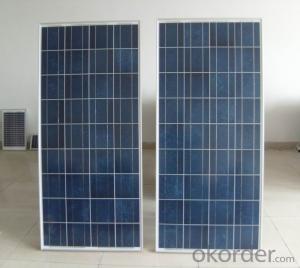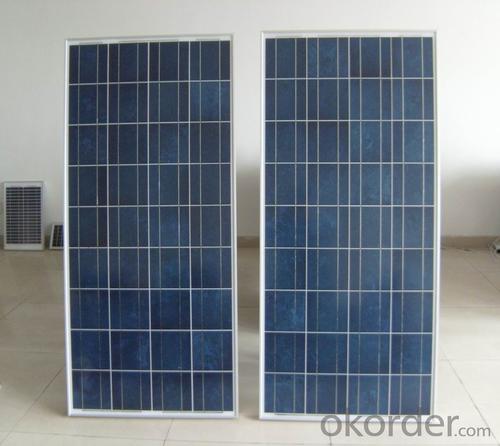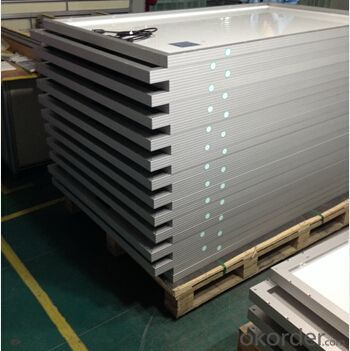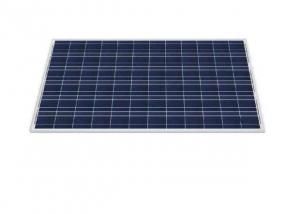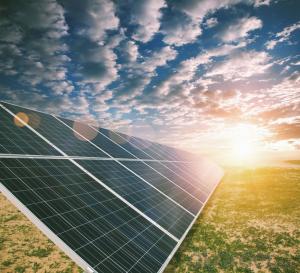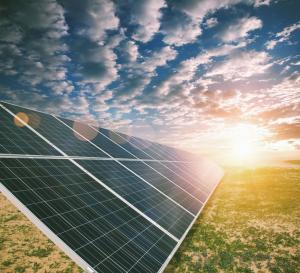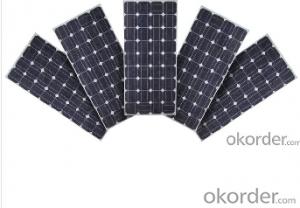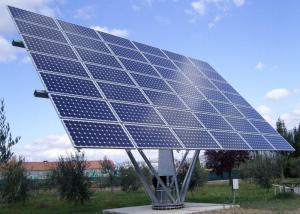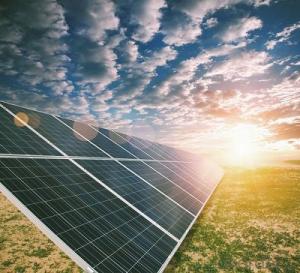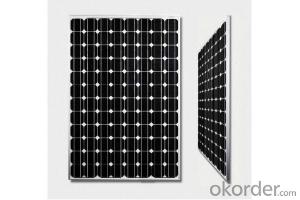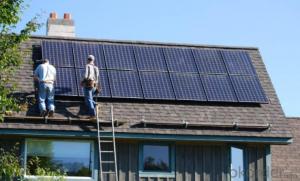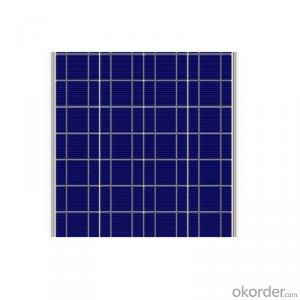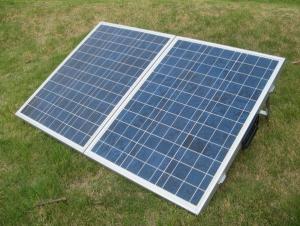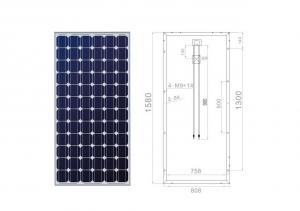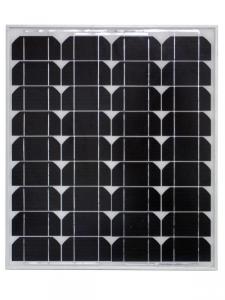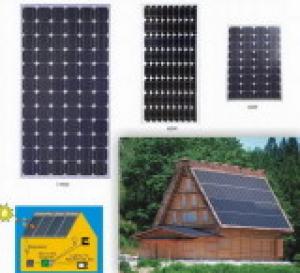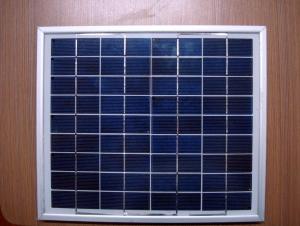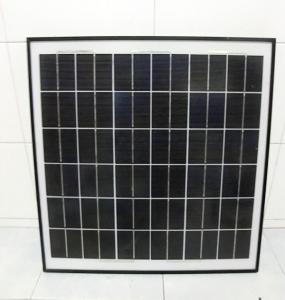85W Poly Solar Panel - CE & TUV Approved with Batteries Solar Panels
- Loading Port:
- Shanghai
- Payment Terms:
- TT OR LC
- Min Order Qty:
- 10000 watt
- Supply Capability:
- 20000000 watt/month
OKorder Service Pledge
OKorder Financial Service
You Might Also Like
Specification
1. The Introduction of Solar Module
Solar modules use light energy from the sun to generate electricity through the photovoltaic effect. The majority of modules use wafer-based crystalline silicon cells or thin-film cells based on cadmium telluride or silicon. The structural (load carrying) member of a module can either be the top layer or the back layer. Cells must also be protected from mechanical damage and moisture. Most solar modules are rigid, but semi-flexible ones are available, based on thin-film cells.
2.Technical Parameter
Type | CNBM Solar Polycrystalline Series |
Materials | Silicon |
Guarantee | 12 yrs free from defects in materials and workmanship No less than 90% within 10yrs and no less than 80% within 25yrs TUV(IEC61215&IEC61730), CE, UL |
Application | Photovoltaic/ solar/ green energy/ energy saving |
Descriptions | 1.High efficiency crystalline silicon solar cell. Even if under the weak light, the solar module can produce maximum power output. 2.Tempered glass (toughened glass): Anti-reflecting coating and high transmission rate glass increase the power output and mechanical strength of solar module. 3. EVA and TPT: Using high quality EVA and TPT to prevent destroying and water. 4. AI frame: Without screw, rner connection. 6 holes on the frame can be installed easily. 5. Junction box: Multi function junction box with water proof. 6. Long lifetime: ≥25 years; Less power decrease. 7. Good performance of preventing from atrocious weather such as wind and hails. 8. Resisting moisture and etching effectively, not effected by geology. 9. The certificate issued by international authority: UL, TUV, IEC, CE.
|
Packaging Details: | 26pcs/pallet, 28pallets/ 40HQ Our solar panels are packed in cartons, and then pallet. Shipping by sea or by air are both ok, it up to customer’s chose. We’d like to inquiry the freight cost for customer after be informed exact quantity and destination address. |
3. Application and Pictures of Products
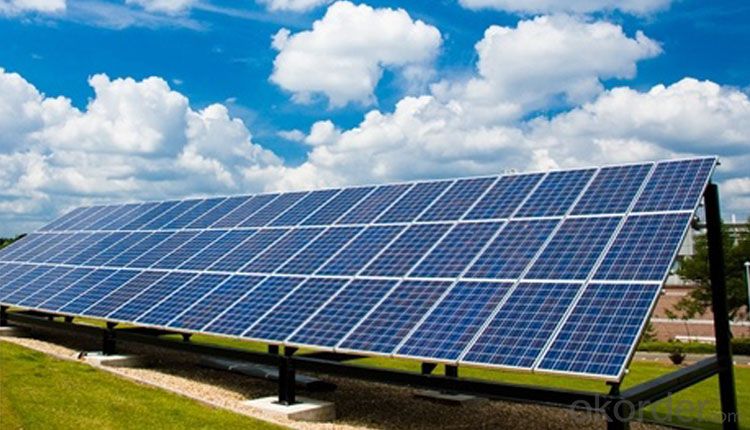
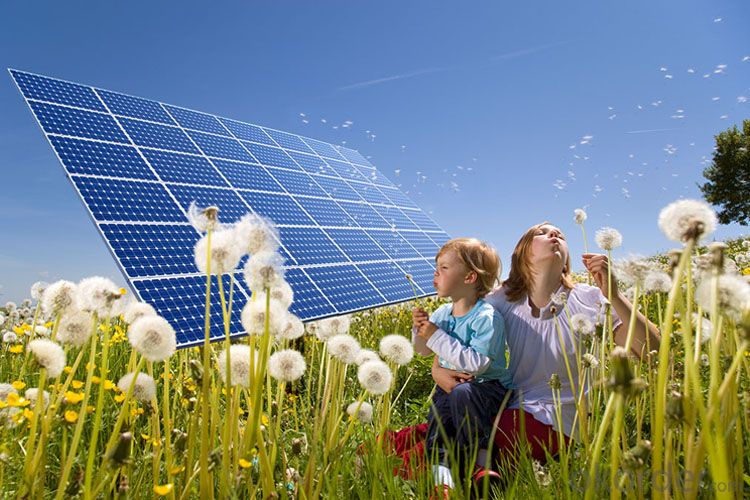
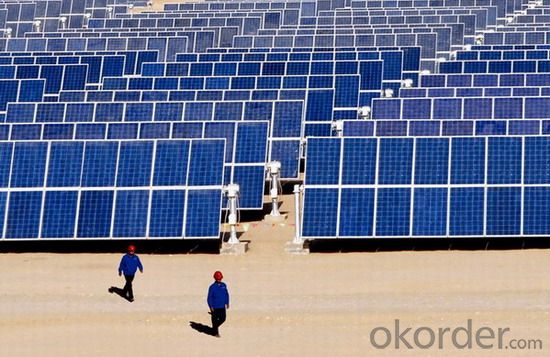
4. How to Work
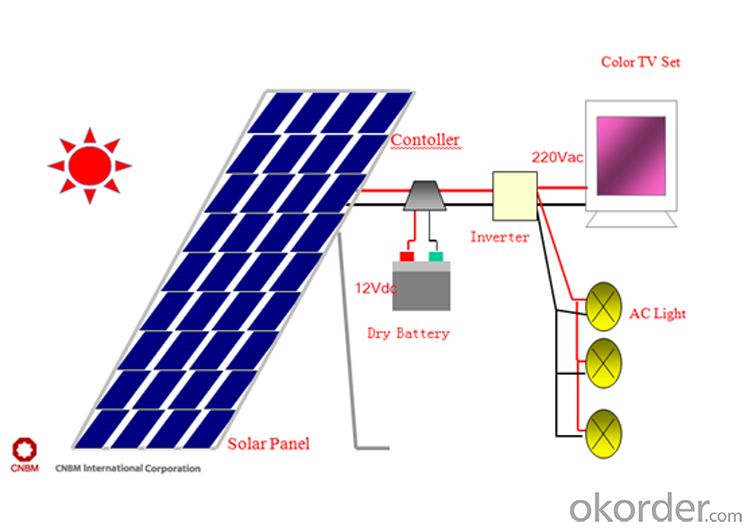
5. Packing Details
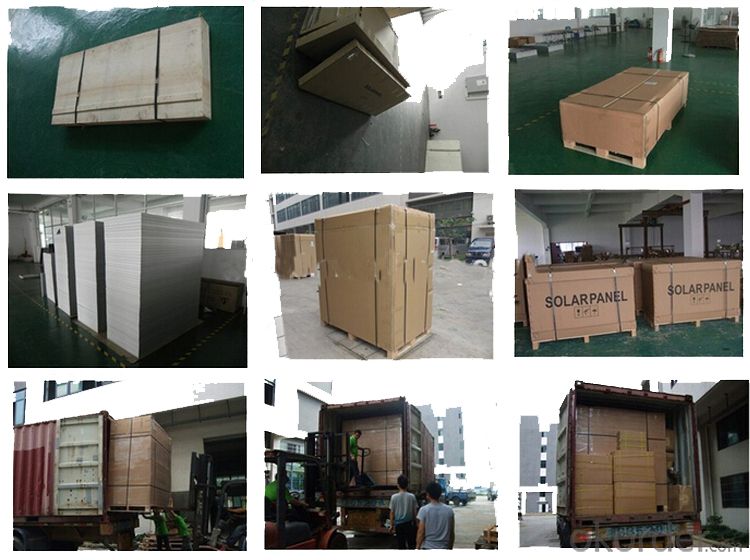
6. FAQ
Q1: What is the business type for the company?
A1: We are one of the biggest manufacturers in zhejiang.Chnia. Which is a high tech PV enterprise dedicated to the research, development, production and sales..
Q2: How long solar panel warranty can you offer?
A2: 10-Year product warranty,25-year linear power output warranty
If there is any quality problem, we will pay for freight and send free parts to you.
Q3: How many certificates do you have?
A3: We have 16 certificates,such as CE, TUV, UL, and so on.
- Q: Can solar panels be damaged by birds or other animals?
- Yes, solar panels can be damaged by birds or other animals. Birds may build nests or perch on the panels, causing blockage of sunlight and reducing their efficiency. Additionally, animals like squirrels or raccoons may chew on the wires or cables, leading to electrical damage. To prevent such issues, various measures like installing bird deterrents or using protective mesh can be taken.
- Q: Can solar panels be used for heating water?
- Yes, solar panels can be used for heating water. Solar thermal systems or solar water heaters use solar energy to heat water by capturing sunlight and converting it into heat energy. This heat is then transferred to a fluid, which is used to heat the water in a storage tank. This sustainable and cost-effective method can be used for residential, commercial, and industrial water heating purposes.
- Q: What i would like to know is if you were using commercially available solar panels, clustered as close together as possible and spread out on one acre, how much electrical energy is produced? if u can 'translate' this into terms of ( hour of average daylight = powering a ____ for X units of time)
- There okorder / Why pay thousands of dollars for solar energy ($27,000 average cost) when you can build your own solar panel system for just a fraction of the retail cost. You can build a single solar panel or you can build an entire array of panels to power your whole house. Some people are saving 50% on their power bill, some people are reducing their bill to nothing. But what’s most impressive is that just by following these instructions some are even making the power company pay them!
- Q: Ok so i have to solar panels to charge a battery however the panels hooked up in series does charge the battery very slowly because series connections only multiplies the voltage but leaves the current the same. Is there a way i can also hook both of them up in parallel at the same time to multiply the current for faster charge? I know i can do this with 4 panels but i dont want to spend extra. So is there a way to hook up 2 solar panels in series and parallel at the same time? Thanks in advace
- never hook up solar panels in series, you reduce the total power produced, and may hurt them, only voltage out, never voltage in. Don't forget to vote for best answer!
- Q: Can solar panels be used to power a film set?
- Yes, solar panels can be used to power a film set. Solar panels convert sunlight into electricity, which can be used to power various equipment and lighting on a film set. This renewable energy source offers a sustainable and environmentally friendly alternative to traditional power sources.
- Q: Can solar panels be used in areas with high levels of drought?
- Yes, solar panels can be used in areas with high levels of drought. Solar panels are not affected by water scarcity as they do not require water for their operation. They generate electricity by converting sunlight into energy, making them suitable and effective in dry climates.
- Q: How do solar panels affect satellite dish reception?
- Solar panels can potentially obstruct the satellite dish's line of sight to the satellite, leading to signal interference and reduced reception quality.
- Q: Are there any fire hazards associated with solar panels?
- Yes, there are potential fire hazards associated with solar panels. Although solar panels themselves do not typically catch fire, electrical malfunctions or faults in the wiring, inverters, or connectors can lead to overheating and fire. Additionally, if a fire breaks out in the surrounding area, solar panels can hinder firefighting efforts by creating potential electrical hazards and obstructing access to the roof. Therefore, proper installation, regular maintenance, and compliance with fire safety regulations are crucial in mitigating these risks and ensuring the safe operation of solar panel systems.
- Q: How do solar panels impact the energy independence of a region?
- Solar panels can significantly increase the energy independence of a region. By harnessing the power of the sun, solar panels generate clean and renewable electricity, reducing the reliance on fossil fuels. This diversification of the energy mix decreases the region's vulnerability to fluctuations in global oil prices or supply disruptions. Moreover, solar panels enable local communities to generate their own power, reducing the need for external sources and empowering them to become self-sufficient in meeting their energy needs.
- Q: How much electricity can a solar panel generate?
- The amount of electricity a solar panel can generate depends on several factors such as the size and efficiency of the panel, the amount of sunlight it receives, and any shading or obstructions. On average, a typical solar panel can generate between 250 to 400 watts of electricity per hour.
Send your message to us
85W Poly Solar Panel - CE & TUV Approved with Batteries Solar Panels
- Loading Port:
- Shanghai
- Payment Terms:
- TT OR LC
- Min Order Qty:
- 10000 watt
- Supply Capability:
- 20000000 watt/month
OKorder Service Pledge
OKorder Financial Service
Similar products
Hot products
Hot Searches
